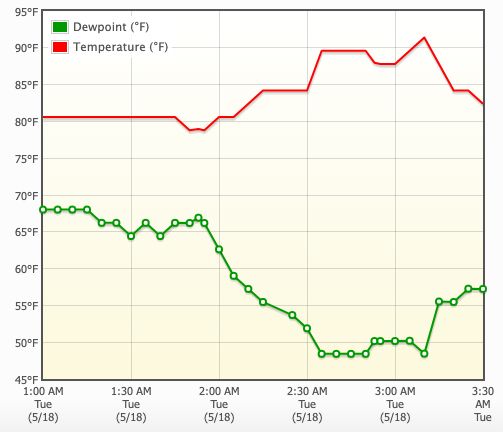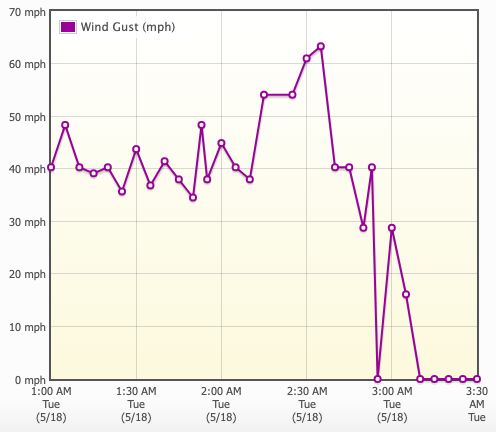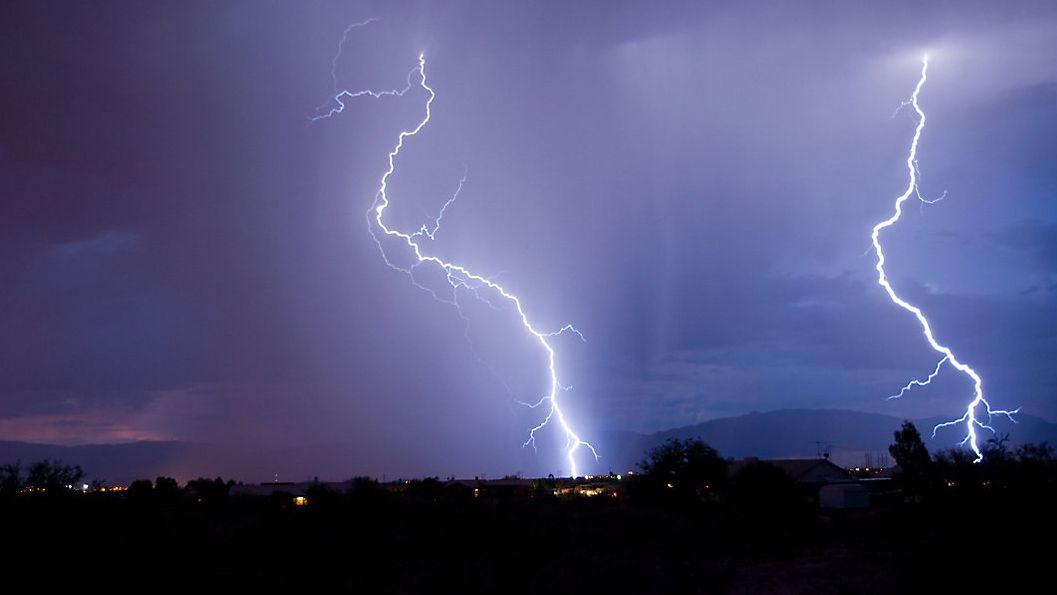Decaying showers and thunderstorms in the San Antonio area caused a heat burst early Tuesday morning, sending the temperature to 91 degrees at 3:10 a.m.
Heat bursts aren’t very common, but when they happen, it’s typically at night from thunderstorms that are falling apart. In fact, most of the activity was just showers, with nothing really showing up in San Antonio itself.
As rain falls down into dry air under a decaying thunderstorm, it evaporates and cools. That makes it heavier, so the air accelerates downward, similar to a microburst. In this case, the air compresses, quickly heating it up. As the air slams into the ground, it causes gusty wind and warms the air.
Stinson Municipal Airport on the south side of the metro had its temperature spike by more than 10 degrees, going from about 80 degrees at 2 a.m. to about 90 degrees a little after 2:30 a.m., where it sat for a half-hour before peaking at 91 degrees at 3:10 a.m.
The dew point, measuring the moisture in the air, plummeting during that same time.

At the same time, wind gusts really picked up. They had been around 40 mph, but jumped to around 60 mph during the heat burst. The wind reportedly flipped a plane at the airport and damaged a nearby motel.

Nearby airports just a handful of miles away observed only a small change in the same weather conditions.



